This photo postcard likely dates to the final years of Imperial Russia (1910-1917). It came to me from modern-day St. Petersburg. The back has some standard lettering but no personal information:

I’m guessing that this family is at their dacha, or summer house in the country, because of the trees in the background. Their year-round home was probably in a village or town. They may have been kulaks, or prosperous farmers, but that’s pure speculation on my part.
What I find most interesting about this family is the cultural divide between the generations. The parents look like characters out of one of the great 19th century Russian novels. If we saw a photo of them out of context, we might still guess they were Russian. The next generation, in contrast, looks cosmopolitan and not identifiably Russian. Their country had changed dramatically in their lifetimes, and it would change even more dramatically in the years to come.




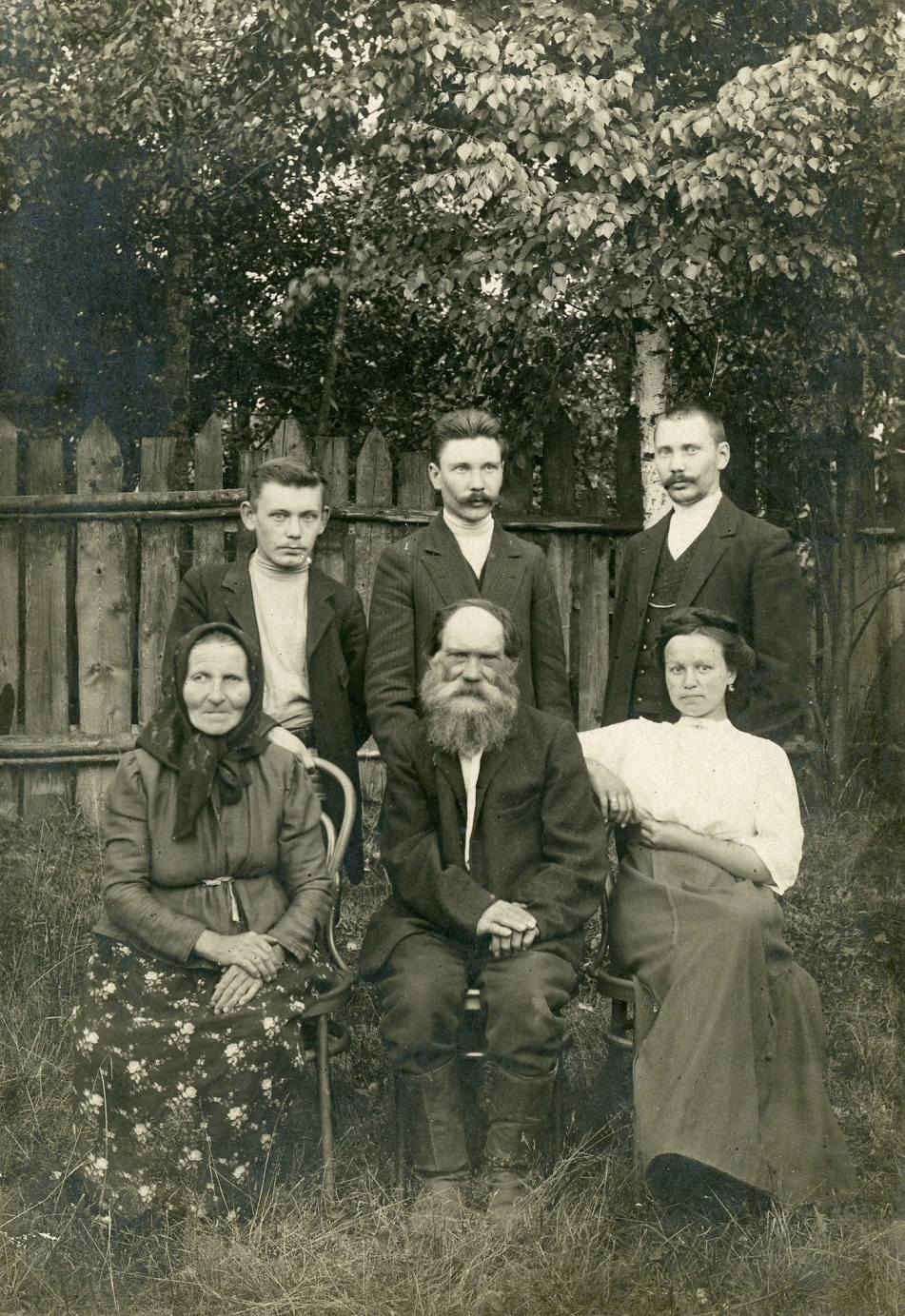
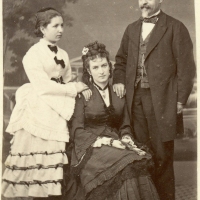
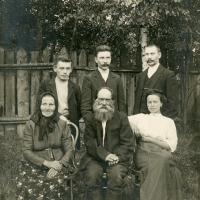
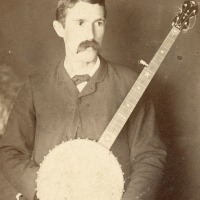
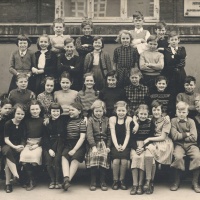
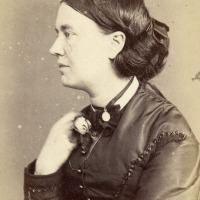
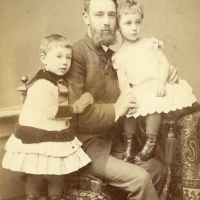
I’m diggin’ the old dude’s beard. Epic.
LikeLiked by 2 people
They don’t make ’em like they used to. Or maybe they do?
LikeLike
The mother’s cheekbones are incredible! And yes, the men’s facial hair is interesting. Clearly mustaches were “in” and beards were “out.” Wish we could know more about the life stories of this family.
LikeLiked by 3 people
The mother looks really no-nonsense. The father, I’m not so sure about….
LikeLiked by 2 people
The children look like they may have left the country and moved to the city.
LikeLiked by 2 people
That’s exactly what I think. Of course, it’s just a theory. Stay well, Morgaine!
LikeLiked by 1 person
I really wish we could go back in time to understand and interpret the expressions that we see in their faces. They are not looking happy at all and I feel a bit sorry but
at the same time very curious about this photo. Thanks for sharing.
LikeLiked by 2 people
I’m so accustomed to seeing serious faces in old photos that they don’t strike me as unhappy. In this case, I wonder about the family dynamics. Did the siblings all get along? Were there rivalries between the brothers? Were there tensions between the parents and their (adult) children? Thank you for your comments, Anita!
LikeLiked by 1 person
There is so much to explore in old photographs where we see people with different expressions and personalities. Many that we will never find the story behind, but I like you to know that I do appreciate your posts with old photographs that convey so much emotion, reflection and speculation.
LikeLiked by 1 person
Thank you so much, Anita! The way relationships are conveyed in portraits is fascinating, even if we can’t know what is sincere and what is an act for the camera.
LikeLike
Fascinating!
LikeLiked by 1 person
Thanks Mike! Будь здоров!
LikeLike
Fascinating look at the two generations. Papa’s fingers look so short!
LikeLiked by 2 people
I don’t think he was a big man. His fingers aren’t long, but they look muscular.
LikeLiked by 1 person
What a fascinating family portrait! The expressions are so varied. The old woman on the left looks like she’s saying, Get me out of here, now! The young man on the left immediately reminded me of a London gangster, circa 1964. (Yes, I have watched too much television.)
LikeLiked by 4 people
I’d guess the mother wasn’t a big fan of having her picture taken. The father, on the other hand, seems to be enjoying the moment. It was probably hard to get the family all together at one time. I see what you mean about the gangster look, haha!
LikeLiked by 2 people
🙂
LikeLike
Wow! You can tell by their faces and expressions all of their different personalities, So interesting to look at!
LikeLiked by 1 person
Thanks so much, Robyn! I’m really enjoying your lockdown updates!
LikeLiked by 1 person
Yes, I agree, this clearly shows generational divides! But then, what family doesn’t have them? Change keeps life interesting!
LikeLiked by 1 person
You’re right, of course, about all families having generational differences. In some cases they’re more obvious than in others! 🙂
LikeLike
What piercing stares those men at the back have. I love the old man. He looks so kindly – positively cuddly compared to his sons!
LikeLiked by 1 person
I bet the father was quite a character! Probably very entertaining to be around.
LikeLike
The two chaps on the right at the back look very alike, I thought they might be twins.
LikeLiked by 1 person
There’s a very strong resemblance, for sure. Cheers, CJ.
LikeLiked by 1 person
I’m reading the Russian classic Anna Karenina by Tolstoy at the moment. The family in the photo somehow makes the characters of the novel more relatable to me. I agree with your observation of cultural divide of generations, Brad. The young woman looks more relaxed judged by her posture. The three young men resemble one another. To me they look like brothers.
LikeLiked by 2 people
Anna Karenina is one of the great novels. Not my favorite, because of the tragic elements, but an important book. This is a good time to tackle it! Russian literature is challenging, but it rewards the effort. My favorite is probably still War and Peace, which I read 25 years ago.
LikeLiked by 2 people
I thought a novel of almost 1,000 pages published in 1887, written by a Russian writer would be a tough read. Now that I’ve read 2/3 of Anna Karenina, I realise why it’s considered a classic, or as you said, an important book. The themes of love, death and humanity are universal. Although I don’t know all the references of the novel, I enjoy it very much. War and Peace is high on my reading list. Thanks for the chat, Brad. Appreciated a lot!
LikeLiked by 1 person
And I’m stunned and impressed by Tolstoy’s visionary views and deep understanding of love and complexities associated with it.
LikeLiked by 1 person
I read Anna Karenina in my late twenties, which may not have been the best time. At that age, life is full of possibilities and we don’t want to think we might make poor choices or end up in a hopeless position. But how many people can honestly say they have no regrets? Happy reading, Isabelle! 🙂
LikeLike
The difference in appearance and attitude between parents and children may be due to politics. Perhaps the younger generation was attracted to Marxism, believing the life of their parents too difficult and unappealing. This photo seems to mark a changing of the guard, so to speak. If they actually were kulaks their future would be bleak when Stalin came to power. Clearly they were prosperous enough to pose for a photograph and the children confident enough to ‘betray’ the plans for their future. I’m imagining of course! Coincidentally I’m reading Gogol’s short storyOld-fashioned Farmers (set in Little Russia/Ukraine) who were not aristocrats but wealthy compared to their serfs, yet to be freed. The assumed date of your photo puts it well past that somewhat ‘idyllic’ past. What an interesting postcard photograph 🙂
LikeLiked by 1 person
An alternative title I considered for this post was “Old Russia, New Russia.” The social and administrative systems of Imperial Russia would have appeared outdated and inadequate to young people at the beginning of the 20th century, yet mechanisms for democratic change were frustratingly out of reach. Few would have wanted the lives of their parents. We don’t know the politics of this family, but it’s possible this photo was taken after the Revolution, which would tell us they picked the winning side. Unfortunately, that wouldn’t have protected them from the collectivization of agriculture or other horrors of the 1930s.
I can’t remember if I read “Old-fashioned Farmers” or not. I read some of his stories but not all of them. Modern Russia would look very familiar to Gogol!
LikeLiked by 1 person
Very interesting photo and lots of fascinating comments. I absolutely agree with a comment which is before mine.
Thank you for sharing it!
Sometimes dacha could be a good escape from our everyday reality 😉
LikeLiked by 1 person
I think Russians have always escaped to their dachas, for various reasons. In Tsarist times, in Soviet times (especially), and now, during this time of social distancing…. Some things never change! 😃
LikeLike
To be honest, the young woman seems to be the one who’s thinking, “I wasn’t enthused about showing up for this gathering, and as soon as I can figure out how to do it, I’m gone.” The one who most intrigues me is the fellow on the left — the shortest one. There’s something about him that makes me think, “If there’s a revolutionary in this group, he’s it.”
LikeLiked by 2 people
It’s funny you say that about that fellow. In her comment above, Liz said he reminded her of “a London gangster, circa 1964.” For me, though, the stars of the show are the father and daughter. He looks like he’d be the life of any party, while her languorous pose suggests she’s completely unfazed by the camera.
LikeLike
Terrific observation about the dress styles between the generations. The older folks definitely look Russian, but the younger people could be from almost any country.
I love the pose of the young woman. It seems strikingly modern here.
LikeLiked by 1 person
Her relaxed confidence made me think she could even be an actress. Probably not, but the thought crossed my mind.
LikeLiked by 1 person
I thought that, too, at first.
LikeLiked by 1 person
Most likely the photo was taken in the pre-revolutionary period. Looking at the working hands, and the appearance of the head of the family and his wife, we can say with confidence that they are peasants. They lived a harsh life, knowing its bottom. Nevertheless, they had the strength to provide for themselves and their children. Looking at the fence of their estate, their clothes, they can be attributed to wealthy peasants. The simple image of an elderly man is very misleading. In fact, he is the personification of stability in this family and much depends on his opinion and decisions. All children except the eldest are very dependent on their father. The eldest son is a little removed from his family. His whole appearance suggests that he works as the manager or owner of his own small trading establishment. Perhaps he manages the capital of this family. The middle and younger brothers do not have such an opportunity, therefore they are dependent on their father and serve as assistants or work as employees. The girl is her father’s favorite and a little spoiled by him, so her pose is quite relaxed. How this elderly man managed to get out of the peasantry and earn a certain capital, one can only guess …I just expressed my opinion …
Brad, I sincerely thank you for what you are doing.
Thank you very much!
LikeLiked by 2 people
Wonderful, insightful comments, Elena! I smiled when I read, “The girl is her father’s favorite and a little spoiled by him.” 🙂 Thank you so much!
LikeLike
I love your posts! They are always an incredible time machine trip back to the past!
LikeLiked by 1 person
Thank you so much, Jadi! I laughed at your comment regarding social distancing: “Bloggers are uniquely immune.” Too funny!
LikeLike
Wonderful photo! I was fascinated by the young woman – the ring on her finger suggests she might be married. Thus the might be the daughter who married and doesn’t live with the family any more or, a girl who married into this family. Either way, she is the one looking most relaxed in the group – such a cool posture!
LikeLiked by 1 person
I wondered if she might have been married to one of the men standing behind, but if that were the case, I doubt she would be sitting next to the parents. At the same time, she seems to have come from a different world than they did. Her parents made that possible–they propelled her into that other world. They must have taken great pride in their beautiful, sophisticated daughter. Was she equally proud of them and their country ways? We can hope so, but with so much change between the generations in this family, there may also have been some friction.
LikeLike